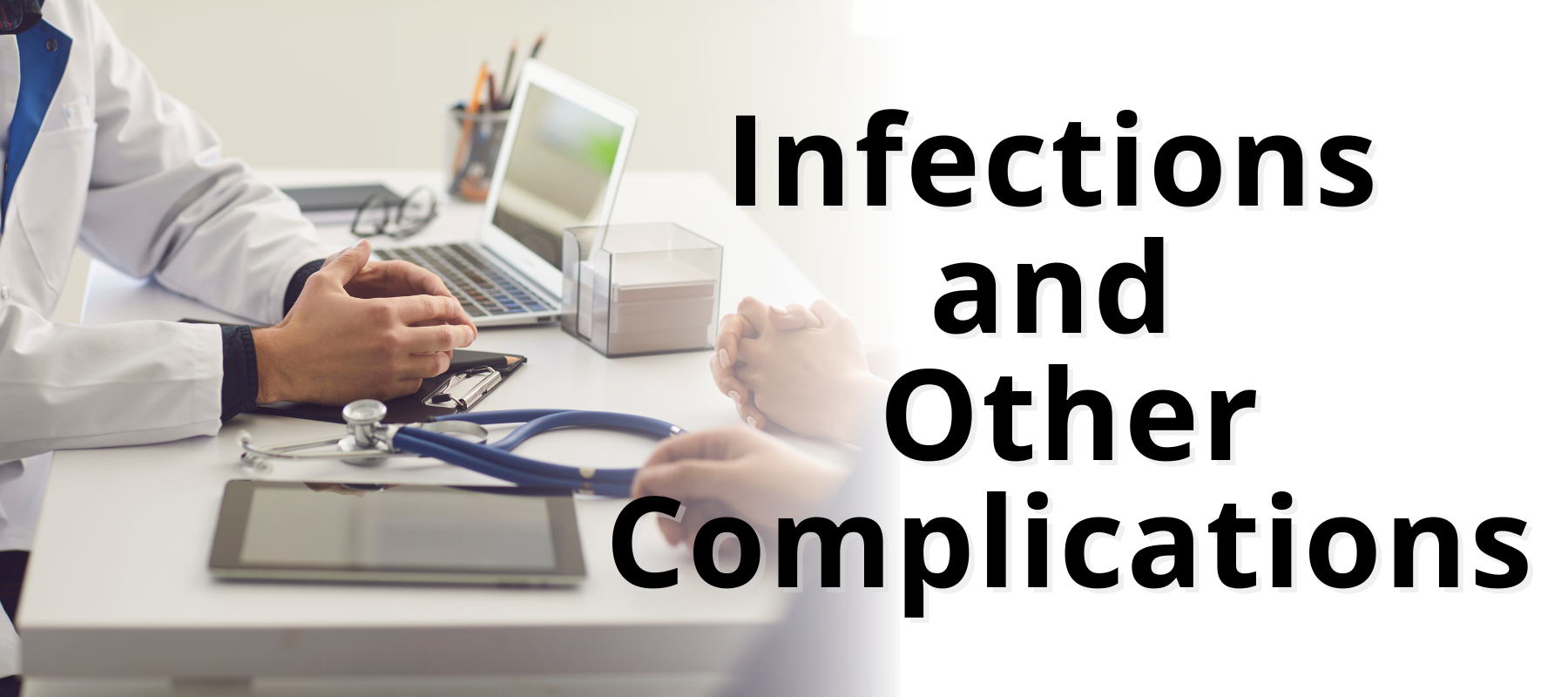| Infections and Other Complications |
 Infection Lymph fluid is high in protein and, when the fluid is congested in tissue, it presents a favorable environment for bacteria to grow and thrive. This is especially concerning when a swollen, lymphedematous limb experiences a cut, burn, or insect bite. The introduction of bacteria to the tissue through an open area on the skin can foster the rapid onset of infection. Signs and symptoms of infection include:
Blood Clots Blood clots or Deep Vein Thrombosis (DVTs) can also cause rapid swelling, pain, and tenderness in the limb. The symptoms associated with a DVT tend to be localized and differ from an infection in that they do not cause flu-like symptoms. Blood clots need to be diagnosed by a medical professional using an ultrasound imaging scan. Congestive Heart Failure Individuals with congestive heart failure (CHF) and lymphedema must be monitored closely and treated conservatively with MLD and compression so as not to overload the heart with fluid. Performing MLD and applying compression therapy may be contraindicated in severe circumstances as the heart may not be able to compensate for the increase in fluid loads. Consultation with a medical provider is warranted to determine optimal interventions for managing lymphedema for those with CHF. Please note that this list is not all-inclusive, as there are other co-morbidities that may interfere with lymphatic treatment. Consulting a medical provider is warranted before starting any therapeutic intervention to determine any potential side effects or precautions. To learn more about how to prevent infections and wounds, watch the video below on appropriate skin care Recorded August 10, 2024 during the virtual NLN's Empowering Patients Series: Lymphedema Treatment Sympoisum Click the buttons below to learn more DISCLAIMER: THIS WEBSITE DOES NOT PROVIDE MEDICAL ADVICE The information, including but not limited to, text, graphics, images, and other material contained on this website are for informational purposes only. No material on this site is intended to be a substitute for professional medical advice, diagnosis or treatment. Always seek the advice of your physician or other qualified healthcare provider with any questions you may have regarding a medical condition or treatment and before undertaking a new health care regimen, and never disregard professional medical advice or delay in seeking it because of something you have read on this website. |